Reports
Satellite Image Shows Suspected Uranium Conversion Plant in Syria
by David Albright and Paul Brannan
February 23, 2011
(Update in seventh paragraph)
The Sueddeutsche Zeitung has reported the location of a site in Syria suspected of containing a small uranium conversion facility that is functionally related to the destroyed covert reactor construction project at al Kibar. The compound is near the town of Marj as Sultan, near Damascus. This facility was reportedly intended for processing uranium yellowcake into uranium tetrafluoride (UF4). This facility could have been related to the process of making fuel for the planned al Kibar reactor. Israel bombed the reactor construction project in early September 2007.
The facility’s operational status is unknown. However, there is suspicion that Syria may have emptied the buildings prior to mid-2008 and taken steps to disguise previous activities at the site.
Syria has refused multiple International Atomic Energy Agency (IAEA) requests to inspect the Marj as Sultan site and two other sites suspected of being functionally related to the reactor construction project. While Syria initially allowed access to the site of the destroyed al Kibar reactor, it did so only after burying the foundation that remained after the bombing, pouring a new foundation, and constructing a new building. With no substantial cooperation from Syria, the IAEA’s Director General should clearly conclude that Syria may have egregiously violated its safeguards agreement and call for a special inspection of these four sites.
Three Suspect Facilities
Previously, the Sueddeutsche Zeitung reported the names of the three facilities suspected of being functionally related to the al Kibar reactor (see figure 1). The IAEA reported in 2008 that member states provided it with information alleging that there existed three other sites in Syria that were functionally related to the reactor. ISIS learned that these sites included uranium processing and storage of equipment or materials related to the reactor project. ISIS identified in commercial satellite imagery the location of the Masyaf site. The other two suspect sites were located at Iskandariyah and Marj as Sultan.
A commercial satellite image of this site near Marj as Sultan, acquired by ISIS, shows considerable activity taking place on July 25, 2008 (see figure 2). 1 The activity seen in the July 25, 2008 image appears to involve pouring a material on the ground surrounding the larger building. There also appear to be trucks and other vehicles present that may be involved in this operation. This activity may represent an effort to lay down a new concrete or asphalt foundation around the building. The IAEA reported that it observed in satellite imagery “landscaping activities and the removal of large containers” at these locations shortly after it requested access to the sites on May 2, 2008. A senior official close to the IAEA said that Syria was seen in imagery laying down slabs at these sites. Laying down a new foundation could be an attempt to defeat the environmental sampling that IAEA inspectors would likely carry out to see if uranium was present in the event of a visit to these suspect sites.
A comparison of commercial satellite images of this site over time highlights the level of activity seen on July 25, 2008 (see figure 3). Little activity is seen in the other images over nearly seven years. The level of activity seen near the larger building in the July 25, 2008 image stands in stark contrast to the other image dates.
UPDATE
A reader commented to ISIS that the substance seen on the grounds around the buildings in the July 25, 2008 image in Figure 2 appears more like piled wet gravel or water. While the activity remains suspicious, ISIS acquired imagery in order to narrow the timeline during which Syria began paving the area around the buildings. An image from July 2, 2008, three weeks before the July 25 image, shows new pavement (see figure 4). An image from January 6, 2008, however, shows that the area has not yet been paved as of that date (see figure 5). Syria paved or repaved the grounds surrounding the suspect buildings sometime after the January 6, 2008 image date—after Israel bombed the reactor construction site at al Kibar in September of 2007. This paving at the suspect Marj as Sultan site and the paving of the grounds surrounding the buildings at the Masyaf site after the bombing of the reactor site are consistent with the landscaping activities reported to have taken place at the suspect sites and could be intended to defeat environmental sampling in the event of an IAEA visit.
Processing Equipment
ISIS has also learned from the Sueddeutsche Zeitung that the equipment inside the two main buildings includes a scrubber and two cyclone separators in the larger building and large diameter pipes (30-50cm across), a manifold, reaction vessels apparently made from stainless steel and storage tanks in the smaller building. There is also a large vertical metal tube with windows that was described as a column for the cleaning or purification of solutions. All of this equipment is consistent with what would be expected in a small uranium conversion facility. Missing is any equipment to turn uranium tetrafluoride into uranium metal, a crucial step in producing uranium fuel for an al Kibar type reactor.
Similarities with Masyaf Site
As with the site near Masyaf, the site near Marj as Sultan also appears co-located on a military storage depot, with stored military vehicles, trucks and large guns (see figure 6). Syria also laid a new foundation around the buildings at the suspect site near Masyaf, which can be seen by comparing commercial satellite imagery from before and after the May 2, 2008 request for access by the IAEA (see figure 7).
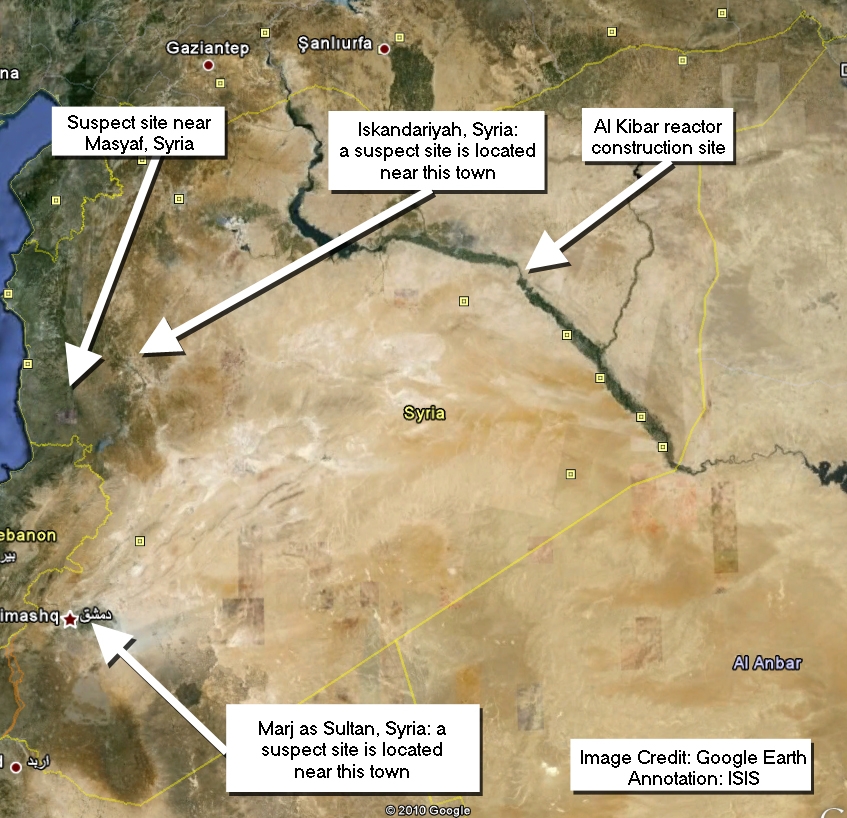
Figure 1. Map of Syria showing the location of the al Kibar reactor and the three sites suspected of being functionally related. The site near Marj as Sultan is located near Damascus.
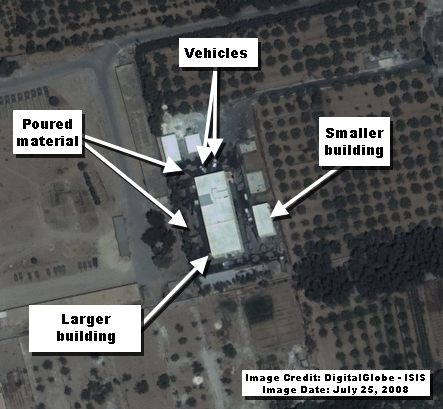
Figure 2. A close-up view of the two main process buildings. Something appears to have been poured on the ground surrounding the larger building. There also appear to be vehicles present which may be involved in this operation. This activity may represent an effort to lay down a new foundation surrounding this building. The IAEA noted in a November 2008 report that it saw in satellite imagery landscaping activities as well the removal of containers shortly after it requested access to these sites in May 2008. Pouring a new foundation may be an effort to defeat IAEA environmental sampling in the event of a visit.
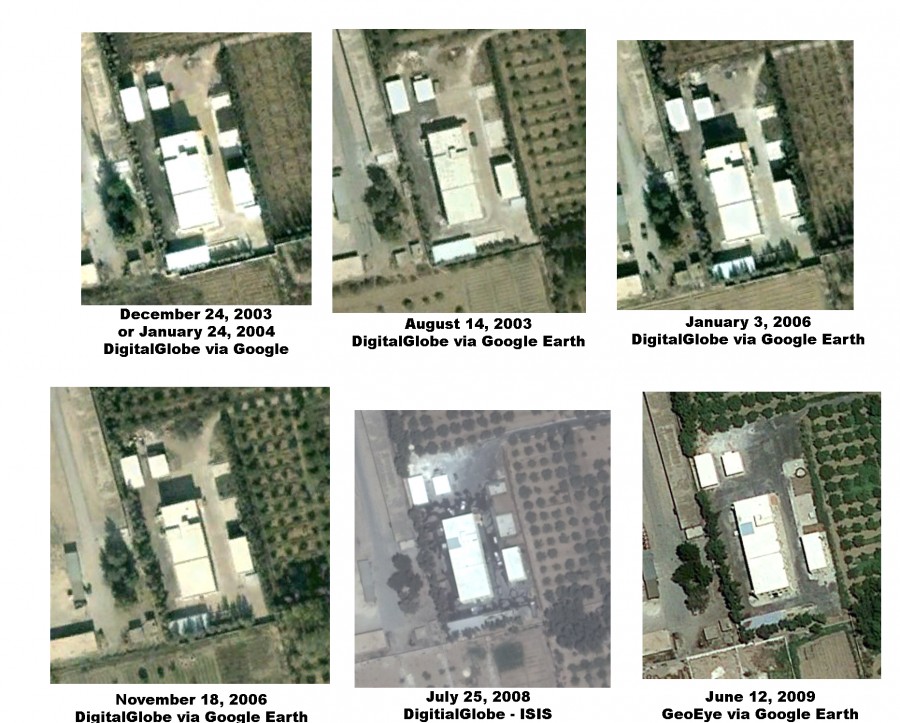
<
p>
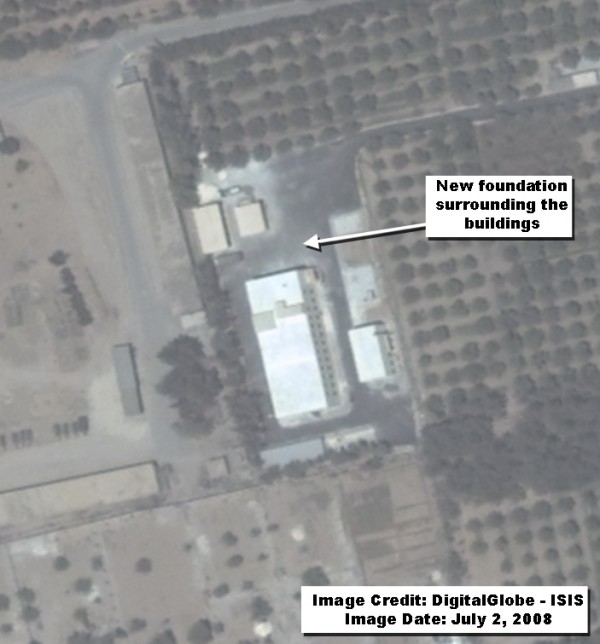
Figure 4. Image taken on July 2, 2008 shows the new foundation laid around the buildings.
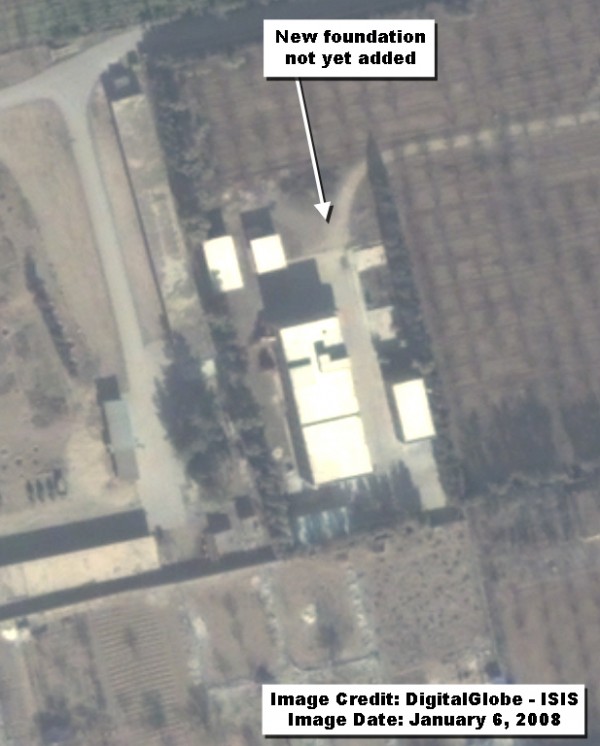
Figure 5. Image from January 6, 2008 shows that the new foundation has not yet been laid around the buildings as of this date. Syria paved the area surrounding the buildings sometime after this image date. Israel bombed the covert reactor construction site in early September 2007.
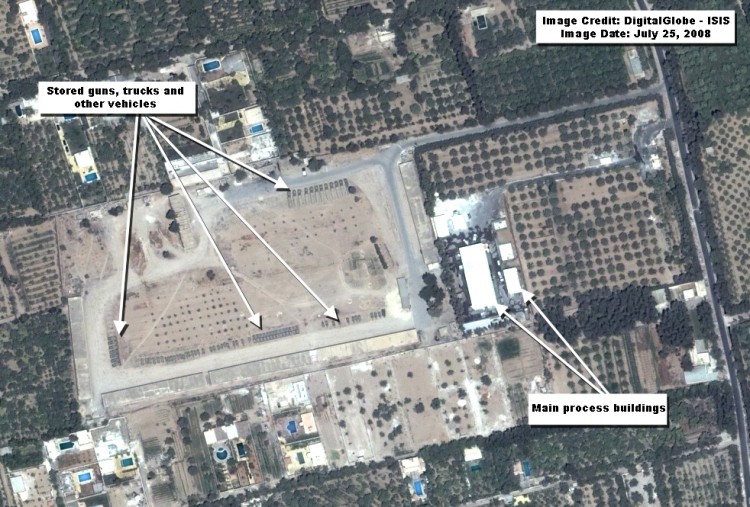
Figure 6. A wider view of the Marj as Sultan site. The main process buildings are seen located at the same site that appears to be a military storage depot. Large guns, trucks, and other vehicles can be seen stored outside.
.jpg)
Figure 7. Image of one area of the Masyaf site from two different dates. The image shows a new foundation surrounding what appear to be storage buildings. The IAEA reported in November 2008 that it noticed in satellite imagery landscaping activities at the other suspect sites shortly after it requested to visit in early May 2008. Such landscaping activities could be aimed at defeating environmental sampling that the IAEA may carry out in the event of a visit.
1 ISIS acquired a clearer version of the July 25, 2008 DigitalGlobe image that is currently available on Google Earth. Figure 2 is this clearer version of this image. The version on Google Earth can be seen by utilizing the historical imagery viewer tool inside the application.

 twitter
twitter